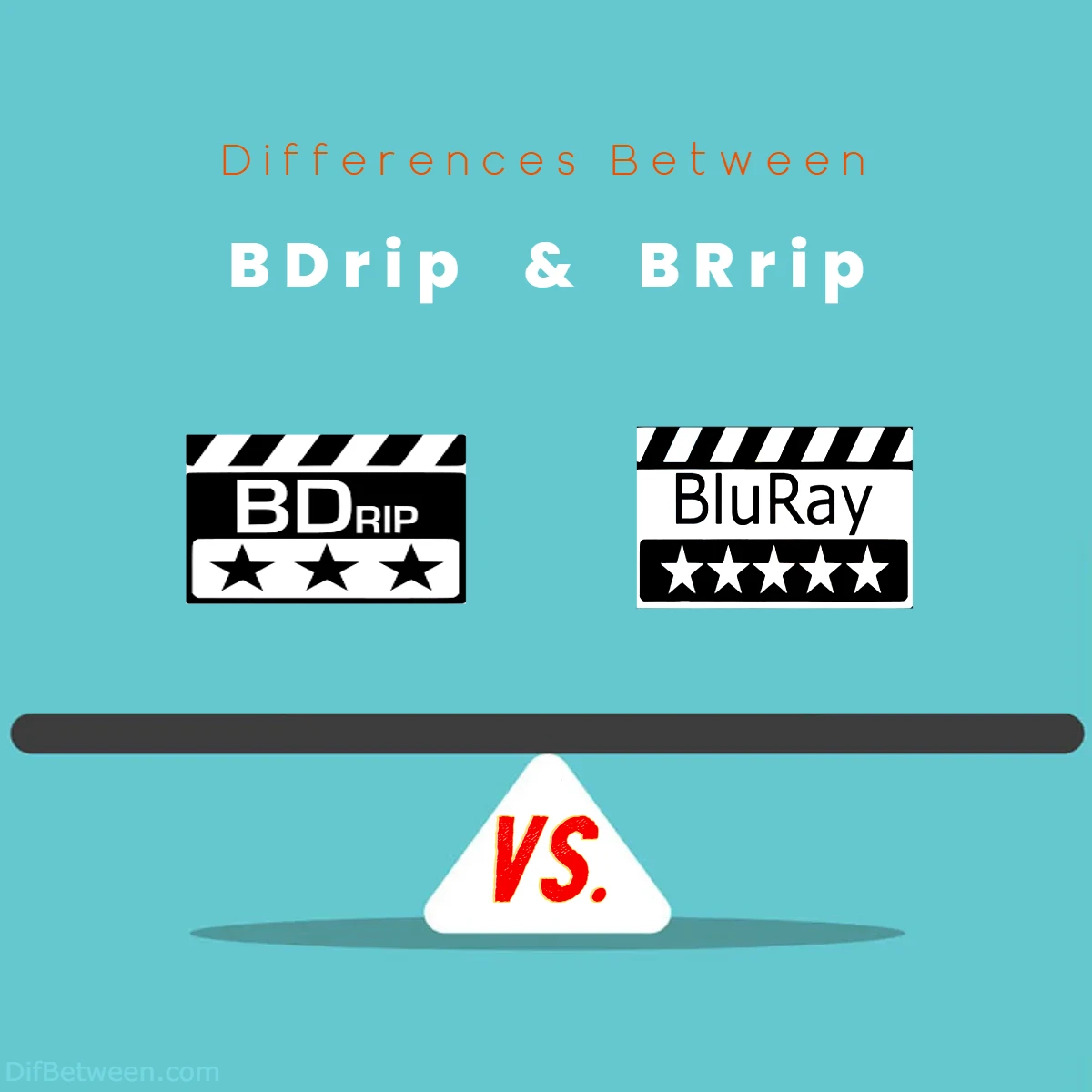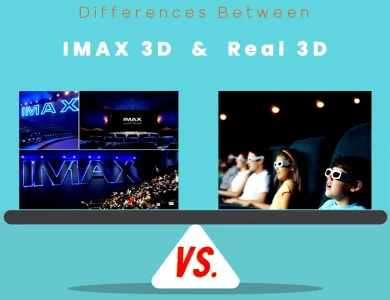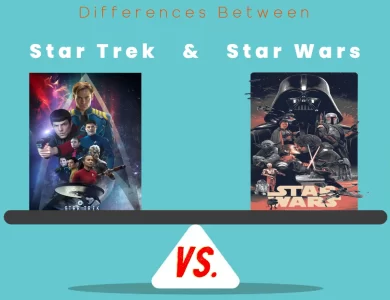
| Aspect | BDrip | BRrip |
|---|---|---|
| Source Material | Genuine Blu-ray disc, ensuring top-tier quality. | Genuine Blu-ray disc, subject to higher compression. |
| Compression Level | Minimal compression; aims to maintain original quality. | Higher compression to reduce file size. |
| Video and Audio Quality | Exceptional video and audio quality, close to Blu-ray. | Good quality, with minor artifacts possible due to compression. |
| File Size | Larger file size due to minimal compression. | Smaller file size thanks to higher compression. |
| Compatibility | Compatible with most media players and devices. | Generally compatible but may require specific codecs or settings. |
| Additional Content | May include extras from the Blu-ray disc. | Often excludes extras to reduce file size. |
| Preferred for | Enthusiasts seeking the best possible quality. | Users prioritizing storage space and faster downloads. |
| Playback Experience | Offers a cinematic experience at home. | Provides a decent viewing experience with some trade-offs. |
| Video Bitrate | Typically 20 to 40 Mbps, maintaining high quality. | Usually 2 to 10 Mbps, subject to more compression. |
| Audio Bitrate | Often includes lossless or high-bitrate audio tracks. | Audio bitrates are lower but still provide good quality. |
| Common Video Codecs | H.264, H.265 (AVC, HEVC) | H.264, H.265 (AVC, HEVC) |
| Common Container Formats | MKV, MP4 | MKV, MP4 |
| Legal Considerations | Typically the result of unauthorized copying and sharing of copyrighted material. | Typically the result of unauthorized copying and sharing of copyrighted material. |
| Internet Connection | Suitable for high-speed internet connections. | More accessible on slower internet connections. |
Have you ever found yourself immersed in the vast world of online movie streaming or downloading, only to stumble upon perplexing terms like BDrip and BRrip? Fret not, for today, we embark on a cinematic journey to decode the intricate nuances that set BDrip and BRrip apart. These terms might appear cryptic at first, but understanding them can greatly enhance your movie-watching experience.
Differences Between BDrip and BRrip
The main differences between BDrip and BRrip lie in their video quality and compression methods. BDrip, short for Blu-ray Disc Rip, originates from authentic Blu-ray discs and aims to maintain high-quality video and audio, making it ideal for cinephiles seeking a cinematic experience at home. In contrast, BRrip, or Blu-ray Rip, employs more aggressive compression techniques to reduce file size, compromising some quality but catering to users with limited storage or slower internet connections. These distinctions encompass factors like bitrate, compatibility, file size, and the presence of bonus content, ultimately shaping your choice between the two for a personalized movie-watching experience.
Understanding the Basics
BDrip – Blu-ray Disc Rip
BDrip stands for Blu-ray Disc Rip. To comprehend BDrip, you must first understand Blu-ray discs. Blu-ray is a high-definition optical disc format known for its superior video and audio quality. When a movie is released on Blu-ray, it undergoes meticulous mastering to ensure the highest possible resolution and fidelity. BDrips are created by extracting the video and audio content directly from these Blu-ray discs.
How BDrip Works
- Source: The source of a BDrip is a genuine Blu-ray disc, which is the gold standard for high-quality video and audio in the film industry.
- Extraction: To create a BDrip, specialized software extracts the video and audio files from the Blu-ray disc without significant compression. This process preserves the original quality of the movie.
- Encoding: Once the raw video and audio are extracted, they are typically encoded into a more accessible format, such as MKV or MP4, using codecs like H.264 or H.265 (also known as AVC and HEVC, respectively). This step is essential for compatibility with various media players.
- Extras: BDrips may include additional content found on the Blu-ray disc, such as deleted scenes, commentary tracks, and subtitles, depending on the release.
- Quality: BDrips are renowned for their exceptional video and audio quality, often matching or coming very close to the quality of the original Blu-ray disc.
BRrip – Blu-ray Rip
Now that you have a grasp of BDrip, let’s explore BRrip, which stands for Blu-ray Rip. BRrips also originate from Blu-ray sources but differ in their approach to compression and encoding.
How BRrip Works
- Source: Like BDrips, BRrips start with a Blu-ray disc as the source material.
- Compression: The key distinction lies in the compression method. BRrips use more aggressive compression techniques to reduce the file size. This compression can lead to a loss of some video and audio quality compared to the original Blu-ray.
- Encoding: BRrips undergo encoding similar to BDrips, converting the video and audio into a format suitable for playback on various devices. However, the encoding process may introduce artifacts due to the higher compression applied.
- Extras: BRrips often exclude additional content found on the original Blu-ray disc to further reduce file size.
- Quality: While BRrips aim to maintain a good balance between file size and quality, they may not offer the same level of pristine video and audio quality as BDrips or the original Blu-ray disc.
Now that we’ve covered the fundamental concepts of BDrip and BRrip, let’s delve into a detailed comparison of the two.
Video and Audio Quality
One of the primary differentiators between BDrips and BRrips is the video and audio quality. BDrips aim to replicate the pristine quality of the original Blu-ray disc, making them a preferred choice for movie enthusiasts who want a cinematic experience at home. The minimal compression used in BDrips ensures that the video remains sharp, with vibrant colors and high resolution. Audio quality is also top-notch, often offering lossless or high-bitrate soundtracks that can deliver a surround sound experience.
On the other hand, BRrips, while still providing good quality, may exhibit minor artifacts due to the higher compression applied. These artifacts can manifest as pixelation, blurriness, or audio distortions in some scenes. However, for the average viewer, these differences may not be highly noticeable, making BRrips a reasonable choice for those who prioritize file size and quicker downloads over absolute quality.
File Size and Storage Considerations
BDrips typically result in larger file sizes due to their minimal compression. These larger files are a trade-off for maintaining high-quality video and audio. If you have ample storage space and a robust internet connection, BDrips offer the most authentic home theater experience.
On the other hand, BRrips are designed to reduce file size while maintaining acceptable quality. This makes them more suitable for users with limited storage space or slower internet connections. The smaller file size also allows you to store more movies on your devices without worrying about running out of space.
Compatibility and Playback Experience
Both BDrips and BRrips are generally compatible with most modern media players and devices. However, there are some differences to consider:
- BDrips: These files are typically encoded in widely supported formats like MKV and MP4, using codecs like H.264 or H.265. This ensures a smooth playback experience on a variety of devices, including smart TVs, gaming consoles, and media players.
- BRrips: While BRrips also use common formats and codecs, the higher compression may sometimes require specific codecs or player settings for optimal playback. Some devices may struggle to handle the added compression, leading to a slightly less seamless experience compared to BDrips.
Additional Content
When it comes to extra features found on the original Blu-ray disc, BDrips often include these bonus materials, such as deleted scenes, director’s commentary tracks, and multiple language subtitles. This caters to movie enthusiasts who appreciate a comprehensive viewing experience and enjoy exploring behind-the-scenes content.
In contrast, BRrips often exclude these extras to further reduce file size. If you’re primarily interested in the movie itself and don’t mind missing out on the bonus content, BRrips are a more practical choice.
Preferred Use Cases
The choice between BDrip and BRrip ultimately depends on your priorities and preferences:
- BDrip: Opt for BDrips if you’re a cinephile who values the best possible video and audio quality, and you have the storage space and bandwidth to support larger file sizes. BDrips are also ideal if you appreciate bonus content and want a truly immersive viewing experience.
- BRrip: Choose BRrips if you’re looking to conserve storage space, have a slower internet connection, or are simply content with good quality without the need for perfection. BRrips strike a balance between quality and file size, making them suitable for most casual viewers.
Bitrate and Compression
BDrip Bitrate and Compression
BDrips typically maintain a high bitrate to ensure the preservation of video and audio quality. Bitrate refers to the amount of data processed per second in a video or audio file. Higher bitrates mean less compression, resulting in superior quality.
- Video Bitrate: BDrips often have video bitrates ranging from 20 to 40 Mbps (megabits per second), depending on the length and complexity of the movie. This bitrate allows for a faithful reproduction of the original Blu-ray’s visual fidelity.
- Audio Bitrate: BDrips often include lossless or high-bitrate audio tracks, such as DTS-HD Master Audio or Dolby TrueHD, with bitrates exceeding 1 Mbps. These formats deliver immersive, high-definition sound.
BRrip Bitrate and Compression
BRrips, in contrast, employ more aggressive compression to reduce file size. While this compression can compromise some quality, it serves as a practical solution for those with limited storage or slower internet connections.
- Video Bitrate: BRrips typically feature lower video bitrates, which can range from 2 to 10 Mbps. This reduction in bitrate is a direct result of increased compression. It may lead to a loss of detail in complex scenes.
- Audio Bitrate: BRrips often include audio tracks with lower bitrates compared to BDrips. Common formats include AC3 and AAC, which offer good quality but lack the richness of lossless or high-bitrate formats.
Encoding and Compatibility
BDrip Encoding and Compatibility
BDrips are encoded using popular video codecs like H.264 (AVC) or H.265 (HEVC) for video compression. These codecs are widely supported by modern media players, including software-based players and hardware devices like Blu-ray players, gaming consoles, and streaming devices.
The choice of containers, such as MKV or MP4, ensures compatibility with various platforms, making BDrips versatile and accessible to a broad audience. Additionally, the inclusion of subtitles and multiple audio tracks caters to international viewers and those with hearing impairments.
BRrip Encoding and Compatibility
BRrips also employ codecs like H.264 or H.265 for video compression, but the key difference lies in the level of compression applied. This higher compression can sometimes lead to compatibility issues on older devices or less capable media players.
While BRrips are generally compatible with most modern platforms and software, some users may need to install additional codecs or adjust playback settings for the best experience. It’s important to note that the trade-off for smaller file sizes in BRrips may result in minor playback challenges on certain devices.
Legal Considerations
When discussing BDrip and BRrip, it’s essential to touch on the legal aspect of acquiring and distributing these types of files. Both BDrips and BRrips are typically the result of unauthorized copying and sharing of copyrighted material. Downloading or distributing movies in this manner can infringe on copyright laws in many countries.
To enjoy movies legally and support the entertainment industry, consider legal alternatives such as purchasing Blu-ray discs, subscribing to streaming services, or renting digital copies through legitimate platforms. These options provide access to high-quality content while respecting copyright regulations.
BDrip or BRrip: Which One is Right Choose for You?
When it comes to choosing between BDrip and BRrip, it’s essential to consider your specific needs and preferences. Both options offer advantages and trade-offs, so let’s delve deeper into which one might be the right choice for you.
BDrip: The High-Quality Option
If you prioritize top-notch video and audio quality and have the resources to accommodate larger file sizes, BDrip is your go-to choice. Here’s why:
1. Unparalleled Quality
BDrips are renowned for their exceptional video and audio quality. They closely match the pristine quality of the original Blu-ray disc, making them ideal for cinephiles and home theater enthusiasts. If you want a cinematic experience at home with vibrant colors, high resolution, and lossless or high-bitrate audio, BDrips are the way to go.
2. Bonus Content
If you appreciate exploring behind-the-scenes content, deleted scenes, director’s commentary tracks, and multiple language subtitles, BDrips often include these extras from the Blu-ray disc. This enhances your movie-watching experience and provides a comprehensive view of the film.
3. Compatibility and Versatility
BDrips are compatible with most modern media players and devices. They are typically encoded in widely supported formats like MKV or MP4, using codecs like H.264 or H.265. This ensures a smooth playback experience on a variety of platforms, including smart TVs, gaming consoles, and media players.
4. Bandwidth and Storage Considerations
If you have a robust internet connection and ample storage space, BDrips are the perfect choice. Their larger file sizes, resulting from minimal compression, deliver the best possible home theater experience without compromise.
BRrip: The Practical Option
If you need to conserve storage space, have a slower internet connection, or are content with good quality without aiming for perfection, BRrip is a practical and efficient choice. Here’s why:
1. Smaller File Sizes
BRrips are designed to reduce file size while maintaining decent quality. This makes them suitable for users with limited storage space, ensuring you can store more movies on your devices without worrying about running out of space.
2. Acceptable Quality
While BRrips may exhibit minor artifacts due to higher compression, the differences in quality are often not highly noticeable to the average viewer. BRrips offer good video and audio quality, providing a satisfying viewing experience without the need for the absolute best.
3. Practical Compatibility
BRrips are generally compatible with most modern media players and devices. However, due to the higher compression applied, some users may need to install additional codecs or adjust playback settings for optimal performance.
4. Faster Downloads
If you prioritize faster downloads and quicker access to movies, BRrips are a practical choice. Their smaller file sizes make downloading and streaming more efficient, particularly on slower internet connections.
Final Thoughts: Tailor Your Choice
In the BDrip vs. BRrip debate, there’s no one-size-fits-all answer. Your choice should align with your specific needs, resources, and priorities. Whether you go for BDrip or BRrip, remember that the enjoyment of a movie goes beyond technical details. It’s the story, characters, and emotions that truly captivate us. So, let your choice enhance your movie-watching experience without overshadowing the magic of cinema.
Keep in mind that both BDrips and BRrips often result from unauthorized copying and sharing of copyrighted material. To enjoy movies legally and support the entertainment industry, consider legal alternatives such as purchasing Blu-ray discs, subscribing to streaming services, or renting digital copies through legitimate platforms. These options provide access to high-quality content while respecting copyright regulations.
FAQs
The primary difference lies in their approach to compression and resulting file sizes. BDrip, or Blu-ray Disc Rip, maintains high-quality video and audio with minimal compression, ideal for those prioritizing top-notch viewing experiences. BRrip, or Blu-ray Rip, uses higher compression to reduce file size, making it a practical choice for users with limited storage or slower internet connections.
BDrip generally offers superior video and audio quality, closely resembling the original Blu-ray disc. BRrip provides good quality but may exhibit minor artifacts due to higher compression. If you seek the best quality, BDrip is the preferred choice.
BDrip and BRrip are often the result of unauthorized copying and sharing of copyrighted material, potentially infringing on copyright laws. To enjoy movies legally, consider purchasing Blu-ray discs, subscribing to streaming services, or renting digital copies through legitimate platforms.
BRrip is more suitable for faster downloads due to its smaller file sizes resulting from higher compression. If you prioritize quick access to movies, BRrip is a practical choice.
Generally, yes. BDrip and BRrip are typically encoded in widely supported formats like MKV or MP4, using codecs like H.264 or H.265. However, BRrip, with its higher compression, may occasionally require specific codecs or player settings for optimal playback.
BDrips often include extras such as deleted scenes, director’s commentary tracks, and subtitles from the Blu-ray disc. In contrast, BRrips often exclude these extras to reduce file size.
BDrip is the preferred choice for enthusiasts seeking the best possible video and audio quality, along with bonus content. If you want a cinematic experience at home and appreciate high fidelity, BDrip is the way to go.
BRrips can be played on most modern devices, but older or less capable devices may require additional codecs or adjustments due to the higher compression applied. Compatibility may vary depending on the device.
Yes, there are differences in bitrates. BDrips typically feature higher video and audio bitrates, preserving quality. In contrast, BRrips have lower bitrates, which can lead to some loss of detail and richness in audio and video.
BRrip is more economical for users with limited storage space, thanks to its smaller file sizes resulting from compression. It allows you to store more movies without worrying about running out of space.
Read More:



